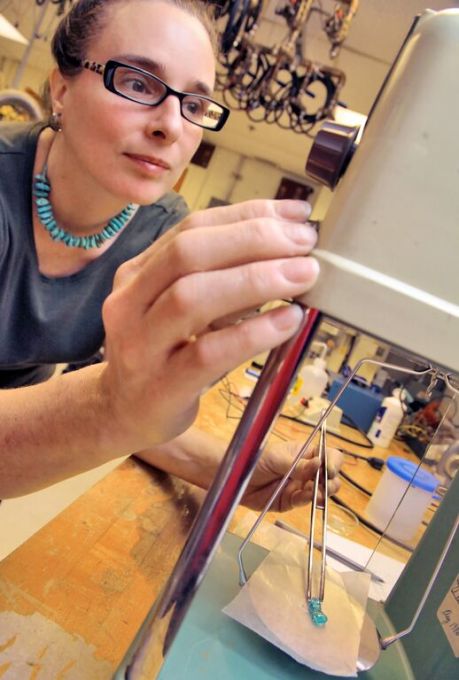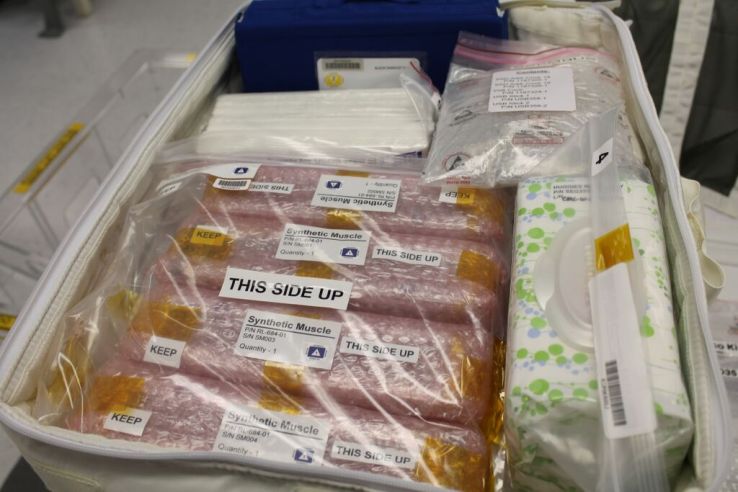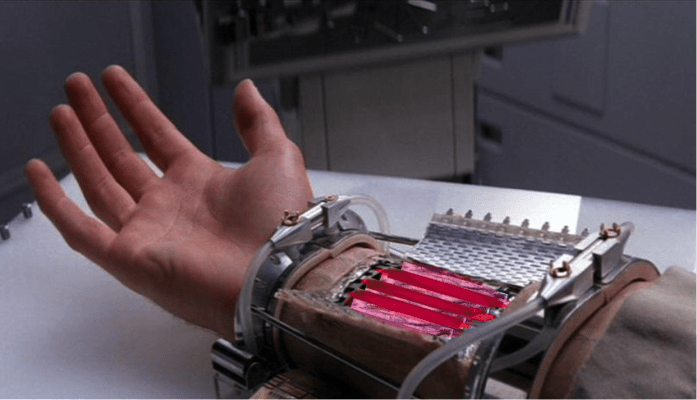Synthetics startup Ras Labs is working with the International Space Station to test “smart materials” that contract like living tissue. These “electroactive” materials can expand, contract and conform to our limbs just like human muscles when a current moves through them – and they could be used to make robots move and feel more human to the touch.
Ras Labs co-founder Lenore Rasmussen accidentally stumbled upon the synthetic muscle material years ago while mixing chemicals in the lab at Virginia Tech. The experiment turned out to be with the wrong amount of ingredients, but it produced a blob of wobbly jelly that Rasmussen noticed contracted and expanded like muscles when she applied an electrical current.
It would be years later when Rasmussen’s cousin nearly lost his foot in a farming accident that she would start to employ that discovery to robotic limbs and space travel. The co-founder thought her cousin might lose his foot and started researching prosthetics.

Lenore Rasmussen, co-founder of Ras Labs
Rasmussen found there weren’t many good replacements out there at the time that looked and acted like the human body or felt comfortable to wear. So she went about inventing something that would look, feel and react just like muscle and would fit snugly to the human frame.
Ras Labs CEO Eric Sandberg likens what the team is doing to re-creating Luke Skywalker’s arm in Star Wars episode 5. “That arm is somewhat the ultimate goal of prosthetics,” Sandberg told TechCrunch. “It provides that lifelike motion, control, and dexterity.”
Rasmussen and her team say the material can conform to fit human flesh. This means the prosthetic liners will shrink and fill in the space to maintain a comfortable fit for the patient’s body. According to Sandberg, the material will even react and adjust when the wearer is dehydrated after a run or hiking.
The lab is still in the testing phase – various types of the synthetic materials are stiffer but not as flexible, others are more flexible, but not as strong. Ras Labs most pressing goal is to get these synthetic blobs to mimic human muscles as much as possible.
While the focus on Earth is on prosthetic use, Rasmussen really charges up when asked about the material’s otherworldly applications. Her lab sent a batch of these polymers with the SpaceX 6 Falcon 9 rocket earlier this spring to see how they hold up in space.
We are making science fiction a reality. Lenore Rasmussen, Ras Labs
Rasmussen will have to wait for the results of those tests for a little while. Her materials will remain in orbit until sometime in 2016 when the rocket comes back to Earth. But Rasmussen thinks she’ll be able to apply her synthetic muscles to both human and robot in the next five years. The hope is that the material will be included as part of the NASA 2020 Mission to Mars.
“We are making science fiction a reality,” Rasmussen told TechCrunch.
In the near-term, the synthetic muscle could be applied here on Earth. Imagine deploying robots made with these polymers into nuclear disaster zones or other unsafe places where humans can’t go.
It also leads humanity one step closer in a way to making our future robot overlords/slaves look and feel more human. Rasmussen told us it’s possible to design the material to look fleshy and that it can form like human limbs.

Ras Labs has also partnered with commercial interests to create protective gear and equipment and is in the middle of raising a seed round to help it continue the work on the ground and beyond our atmosphere.
Scientists have studied these types of fluid, flexible “electroactive” materials for a while. The most common application, according to Wikipedia, is with sensors and actuators. The employment of these synthetic muscles to robotics, prosthetics and other equipment – particularly in space travel -is neat.
“The sky is no longer the limit for smart materials,” Rasmussen said.
